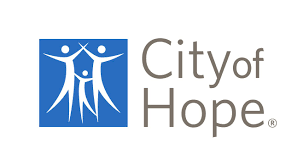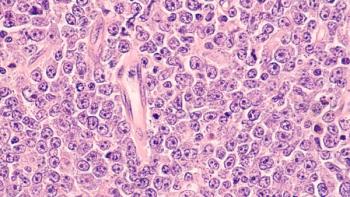
HER-2 Directed Therapies Making Waves in Early-Stage and Metastatic Breast Cancer

A City of Hope expert underscores the benefit of using antibody-drug conjugates, CDK4/6 inhibitors, PARP inhibitors, and checkpoint blockade in early-stage and metastatic breast cancer.
Early-line treatment with olaparib (Lynparza) and abemaciclib (Verzenio), as well as treatment with fam-trastuzumab deruxtecan-nxki (Enhertu), has continued to yield improved invasive disease-free survival (iDFS) and progression-free survival (PFS) among patients with breast cancer. The result has been the development of 3 novel treatment paradigms for this patient population over the course of 2 years, according to Joanne Mortimer, MD.
“The pace of change in how we manage breast cancer is so rapid, it’s hard to keep up in a subpopulation of breast cancer, let alone all of breast cancer or all of oncology. We are making great strides and, increasingly, targeted therapies such as the PARP inhibitors and HER2-directed therapies are really revolutionizing the outcomes of patients with metastatic breast cancer and early-stage disease,” Mortimer said in an interview with Oncology Nursing News.®
In the interview, Mortimer, medical oncologist, Baum Family Professor in Women’s Cancers, associate director, Education and Training, Comprehensive Cancer Center, vice chair and professor, Department of Medical Oncology and Therapeutics Research, director, Women’s Cancer Programs, City of Hope, discussed current applications for HER2-directed antibody-drug conjugates (ADCs), CDK4/6 inhibitors, PARP inhibitors, and checkpoint inhibitors in early-stage and metastatic breast cancer.
Oncology Nursing News®: What have been some of the most importance recent changes in the management of HER2-positive breast cancer?
Mortimer: One of the important changes in the management of HER2-positive breast cancer over the past 12 to 18 months has been the use of the subcutaneous fixed dose of trastuzumab [Herceptin] and pertuzumab [Perjeta], which allows patients to get a subcutaneous injection over 10 minutes every 3 weeks instead of getting infusional therapy. That [regimen] has been proven to be comparable to infusional trastuzumab and pertuzumab in the neoadjuvant setting.
Another important study was DESTINY-Breast03 [NCT03529110], which compared trastuzumab deruxtecan with TDM-1 [ado-trastuzumab emtansine (Kadcyla)]––2 antibody-drug conjugates––as second-line therapy in patients whose disease has progressed after first-line therapy. The results showed that trastuzumab deruxtecan had a significantly higher response rate, duration of response [DOR] and [overall] outcome compared with T-DM1. In fact, the median PFS had yet to be achieved [with trastuzumab deruxtecan at data cutoff]. The NCCN [National Comprehensive Cancer Network] guidelines have [since] changed not to completely exclude T-DM1 as second-line therapy, but [to list trastuzumab deruxtecan as a favored agent in this setting since] the data from DESTINY-Breast03 suggest that trastuzumab deruxtecan is superior to T-DM1.
Where else has trastuzumab deruxtecan shown benefit?
Trastuzumab deruxtecan is really an amazing drug. [In addition to an updated analysis of the DESTINY-Breast03 trial, we also saw very compelling efficacy data with trastuzumab deruxtecan] from the 2021 San Antonio Breast Cancer Symposium in patients with HER2-low disease. We also saw data that the drug worked in HER2 0 patients, which makes no sense since it’s an ADC, so if there’s no HER2, what is this drug doing? The other interesting thing was the [data we saw with the agent in the] management of brain metastases.
Compared with T-DM1, trastuzumab deruxtecan had a better PFS in the CNS [central nervous system]. This is really a very important drug and one that will receive more indications. The fact that the drug isn’t purely [targeting] HER2 and the fact that it crosses the blood-brain barrier really opens a lot of avenues for other indications for the drug.
What trials will be important to keep an eye on in the HER2-positive setting?
We have many trials right now evaluating combinations that are ongoing, including those adding trastuzumab deruxtecan to tucatinib [Tukysa]. It’ll be interesting to see what the results of those trials bear because tucatinib and trastuzumab deruxtecan have impressive responses and DOR, but they also have toxicity. In contrast, T-DM1, which we’ve gotten used to as not having much in the way of systemic toxicity such that you can have patients on it for years, it’s hard for patients to stay on trastuzumab deruxtecan for a very long period.
Similarly, with tucatinib, the diarrhea that patients get with tucatinib and trastuzumab and capecitabine can be significant. Keeping patients on therapy long term is a bit of a challenge sometimes. It will be interesting to see how these [data] play out long term in terms of whether there’s an advantage to putting patients on 2 of these newer agents at the same time.
How has the utility of CDK4/6 inhibitors broadened in scope?
The most important advance in the past year with the CDK4/6 inhibitors is the approval of abemaciclib in the setting of high-risk, HR–positive breast cancer where iDFS was statistically improved by taking 2 years of abemaciclib after completion of neoadjuvant chemotherapy. Many of the women included in that trial were patients receiving neoadjuvant therapy, and it’s rare that a patient with HR-positive disease has a complete pathologic response [pCR]. It’s critical that we pay attention to these patients and give them the opportunity to be on a CDK4/6 inhibitor like abemaciclib that does decrease relapse.
How have treatment recommendations changed since the withdrawal of atezolizumab (Tecentriq) in the metastatic setting?
Initially, the checkpoint inhibitor atezolizumab was used in advanced disease and had a positive outcome in combination with nab-paclitaxel [Abraxane], but then when combined with paclitaxel, there was no advantage. It appears that the drug is likely to be abandoned and surpassed by pembrolizumab [Keytruda] at this point.
Pembrolizumab has been used in the neoadjuvant setting, which seems to be associated with an increased pCR regardless of PD-L1 status. In patients with metastatic disease, PD-L1 positivity should be looked for and the addition of pembrolizumab does improve breast cancer outcomes in metastatic disease when combined with drugs like taxanes.
In what settings have PARP inhibitors had the greatest impact?
We already had data that showed that women who have BRCA1/2 deleterious mutations and metastatic disease who receive second-line therapy, either chemotherapy or a PARP inhibitor, that PARP inhibitors may be somewhat advantageous to chemotherapy in that population. That was the OlympiA trial [NCT02032823], the most recent adjuvant trial, which showed that the addition of 1 year of olaparib to chemotherapy and endocrine therapy in this high-risk population of patients with TNBC or HR–positive breast cancer that had BRCA mutations was associated with an improvement in disease-free and overall survival [OS].
Notably, OS looked to be better, but it did not meet the prespecified statistical end point, so more data will be forthcoming. However, the data are convincing enough that olaparib should be considered in this high-risk population of patients.
This article was originally published on OncLive as “Earlier Introduction of ADCs, PARP and CDK4/6 Inhibitors Improve Outcomes in Breast Cancer”
Newsletter
Knowledge is power. Don’t miss the most recent breakthroughs in cancer care.

















































































